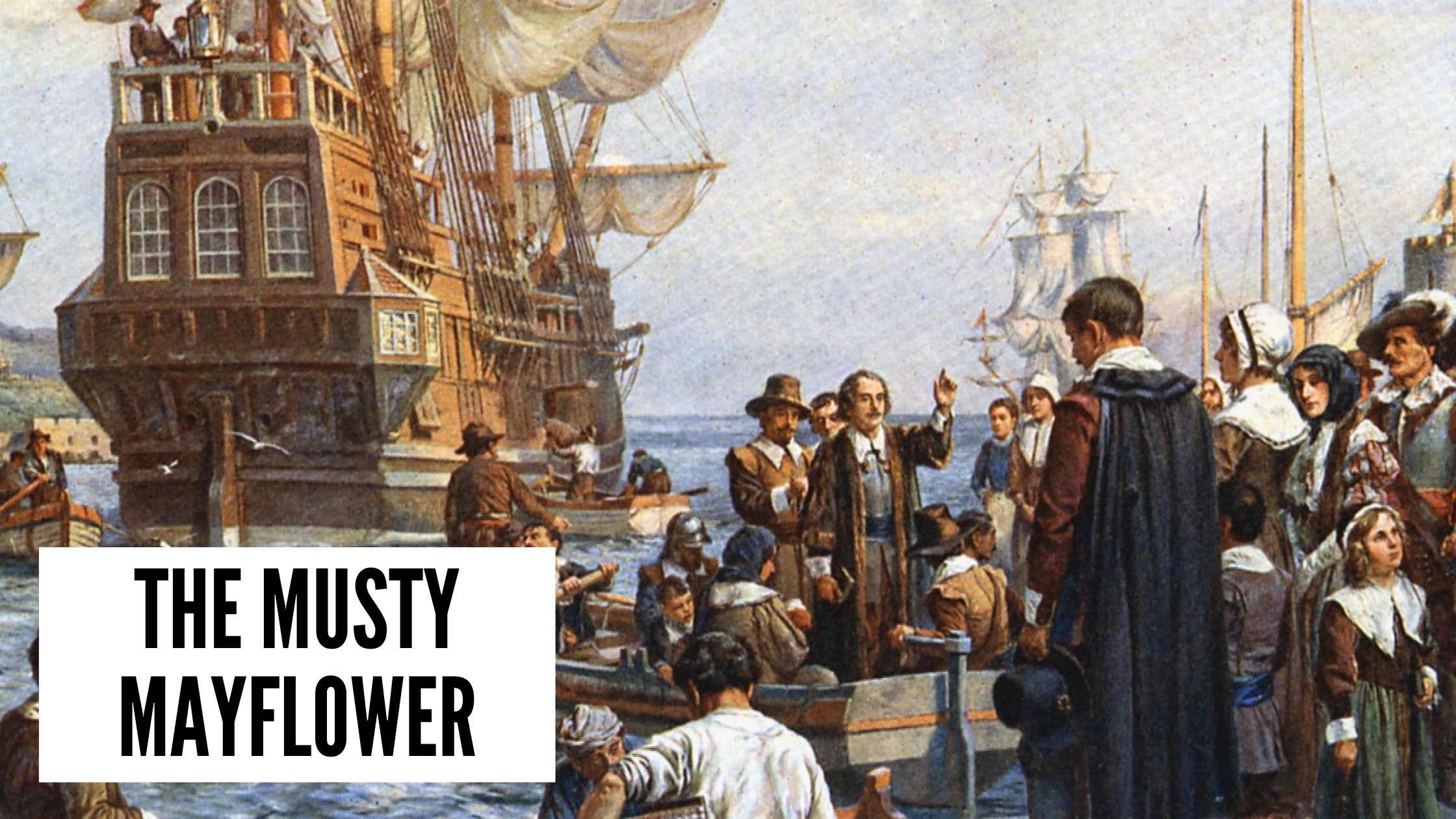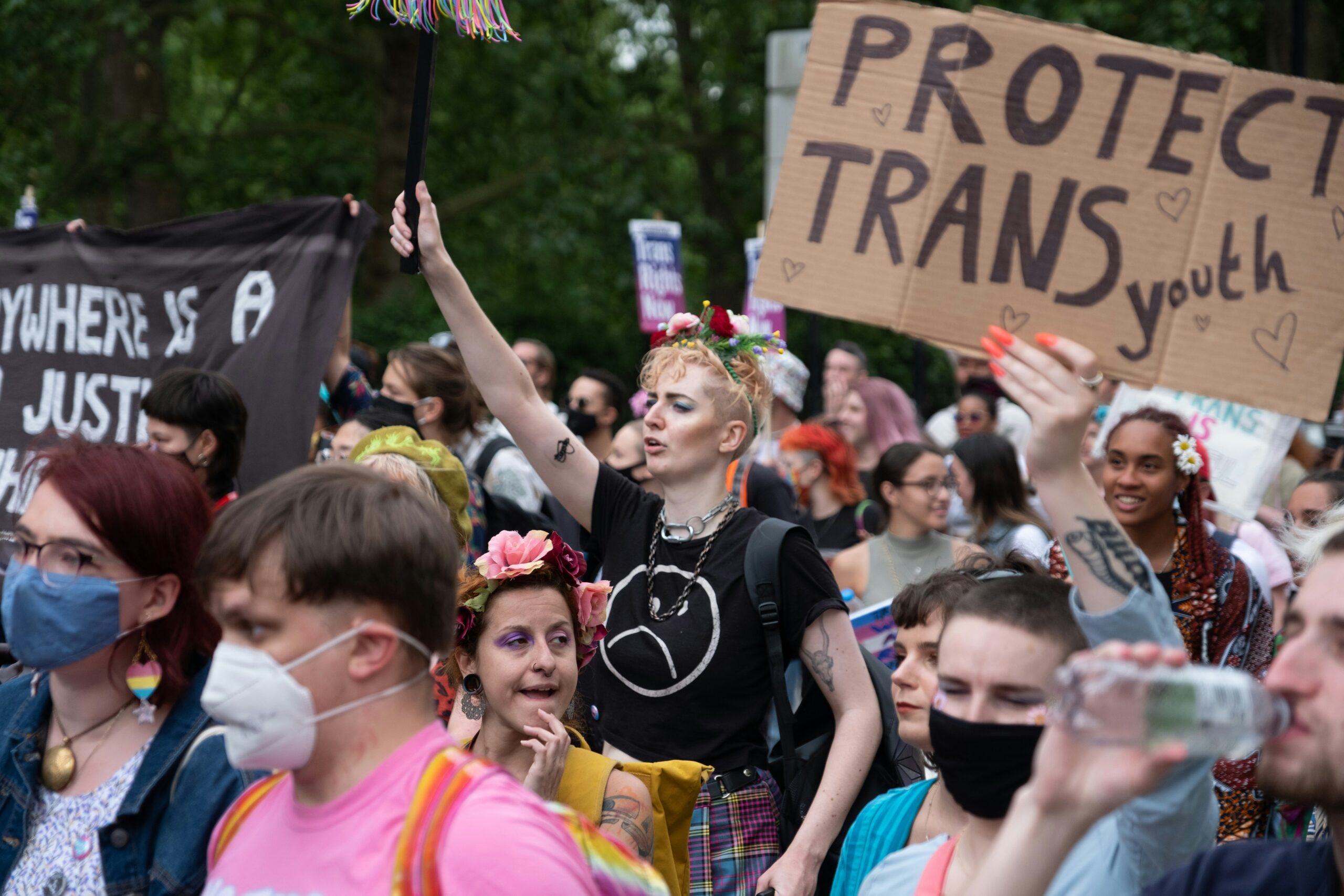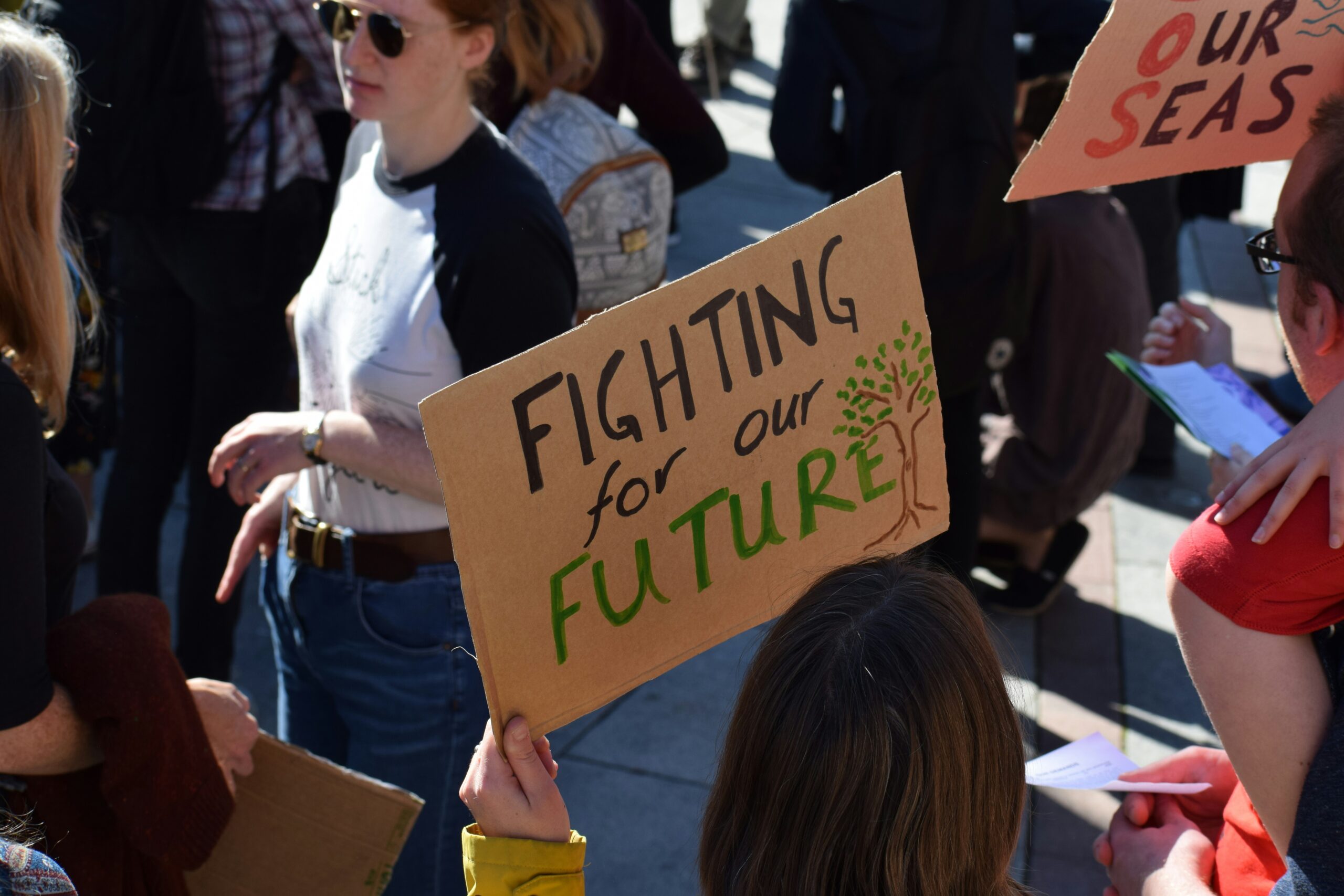![]()
Amber Ruffin’s segment called How Did We Get Here? addresses the recurring question of racist white people during this time of year: Why is there a Black History Month and no White History Month? Ruffin, along with anyone else who has spent even a minute in any American History class, would know that “white history” is celebrated every day of every month of every year.
So, there is no need for such a month.
However, for the purposes of the segment, Ruffin decided to humor these people by discussing the potential value of White History Month. The history provided by the American education system is so whitewashed and diluted that it not only neglects the historical importance of Black people but also misrepresents that of white figures whose racist actions and/or words have also been downplayed or ignored.
So, in light of this discourse, we give you 10 facts for the highly anticipated White History Month!

In August of last year, the newly erected Central Park statue of Susan B. Anthony, Sojourner Truth, and Elizabeth Cady Stanton faced a lot of controversy for its romanticization of history. To correspond with the centennial anniversary of the 19th Amendment, the statue attempted to give homage to the numerous Black suffragettes who played an integral role in campaigning to ratify the amendment.
But, as many Twitter users have pointed out, the white Feminist Movement has a long history of neglecting the intersectional oppression experienced by Black women. This rings true not only for the movement as a whole but especially the white suffragists in question, Anthony and Stanton, who would have never sat at a table with the likes of Truth.
A pinnacle of feminist history is the allyship between the Suffragette Movement and the Black Civil Rights movement. But Southern suffragettes opposed such a union because many of the suffragettes played an integral role in the enslavement and overall degradation of Black people. It’s reported that at least 30% of white women owned slaves and many of them participated in the domestic terrorist group, the Ku Klux Klan. Even the allyship in the North was shaky at best since even the Women’s March on Washington enforced segregation of marchers, forcing the Black participants to the back of the crowd. It’s hard to imagine the others were significantly different if they even included Black women at all.
In line with the coalition, Stanton and Anthony were known to work closely with Frederick Douglas on his abolitionist work, but the already complicated relationship between the two movements fell apart entirely as the African American’s right to vote drew nearer than that of white women. Believing the white women’s right should take precedence over that of the Black man, Susan B. Anthony had this to say:
“I will cut off this right arm of mine before I will ever work for or demand the ballot for the Negro and not the woman.”
While no such quote exists for Stanton, Martha S. Jones, a historian who studied her closely, had a similar impression of her views. She’s on record saying, “[Elizabeth Cady Stanton] stands for an impoverished vision of equality that never admitted that Black Americans, male and female, were her equals.”
For anyone who’s aware of how conveniently the NRA appears in the wake of every white school shooter story but is nowhere to be found when a licensed Black gun-owner is killed for defending themselves in their own home, this will likely not come as a shock to you.
In Ruffin’s video, she discusses that the controversial Second Amendment that grants the “right to bear arms” was created so white slave owners could more effectively keep their slaves in check using armed force.
The ratification of this amendment was discussed at the Virginia Convention. Virginia was a slave state at the time and, since they had a Black enslaved population that significantly outnumbered the white free population, the possibility of a mass slave revolt constantly loomed over them. After James Madison and George Mason debated the topic at the convention, the vote was close, but the amendment was successfully ratified.

The stereotypically “white genre” that is Country actually originated from Black people. The banjo, a pinnacle of the genre, derives from West African lutes that Black enslaved Americans would recreate from gourd fruits that they were given. The instrument became a staple in slave music until it was later co-opted by white minstrels to use in their Blackface performances and then appropriated by white country musicians who then made it central to the music they rebranded as Country.
Similar to any other music genre with Black-creation and white domination, there were some thefts of songs as well. There’s the hymn “When the World Is On Fire” that became “This Land Is Your Land”, and “Carry Me Back to Old Virginny” which became the state anthem while its creator, James A. Bland, experienced mistreatment in the state that persisted even after his song’s fame.
Much of this same co-opting exists currently since Lil Nas X’s trap country song, “Old Town Road” was removed from Billboard’s country charts for essentially not being “country enough,” while Beyoncé’s song “Daddy Lessons” from her “Lemonade” album was given similar treatment after being rejected by the Grammy Country Committee, despite conforming more to traditional Country music.
The whitewashing of Country music exemplifies why discussions of cultural appropriation are so important. Not only has it been rebranded as a “white genre,” but the tremendous amount of anti-Black gatekeeping from the white music executives has been the prime means of keeping it that way.

The G.I. bill enacted under Franklin D. Roosevelt’s presidency perfectly embodies the flaws of a “colorblind” mindset in a white supremacist society. The bill decreed that anyone who served in the armed forces and then pursued a higher education would be given a loan to buy a house. But this was contingent on one’s ability to get accepted into a university that didn’t reject them just because they were Black and their ability to avoid getting redlined by housing complexes that refuse to sell nice houses to Black people even if they had the money. Because of this bill’s failure to consider race, the white middle class was effectively strengthened and increased at the expense of the Black middle class, which was completely eradicated in the process.

The Italian mafia enjoyed jazz music so much that they basically ran a plantation of Jazz players who would be assigned to perform at their clubs. Through restrictive contracts, mafia members were essentially given ownership over the players and their music. Even after they died, ownership of these musicians would carry over to other family relatives like a spouse, sibling, or child, effectively tethering these musicians to this life forever.
Not only were these workers underpaid, but they were also forbidden from performing at other clubs. Players that sought work at other clubs would have their new employers bullied and intimidated to ensure those musicians would not be hired and, with segregation laws being at an all-time high during this time period, their employment options were already limited even without such a contract.
So, despite making the decision to sign these contracts, their decision was hardly their own. Especially considering the added pressure they received from the people “asking” them to sign the contract since it was, you know, the mob.

Brother Jonathan was the main personification of American ideals in a comedic play called “The Contrast” (1787), where he played a waiter for the character of Colonel Manly. Perhaps the central value of this character was upholding the American doctrine of equality because, unlike Europeans and other people, “we don’t make any distinction between quality folks and other folks.”
But it’s worth noting that, despite this feel-good statement, he’s also known to be very particular about how his employment relationship with Colonel Manly is described. Throughout the show, he’s continuously bothered when referred to as Manly’s servant since the position of servitude was generally synonymous with Blackness at the time and God forbid he be equated to one of them. So, with this character, we see how anti-Blackness is made central to the American identity and value-system. After making several appearances in political cartoons after the play premiered, Brother Jonathan would later evolve into who we currently refer to as Uncle Sam.

Marion Sims, the “father of modern gynecology,” is lauded for his various innovations in medical tools and techniques but is most notorious for perfecting the surgical repair of the vesicovaginal fistula. This tremendous feat, unfortunately, came at the expense of enslaved Black women who were involuntarily participants in these atrocious experiments until he finally got it right and it was safe to use on white women.
Even more gruesome is the fact that these experiments were intentionally done without anesthesia. Despite the technology being available during this time, Sims chose not to use any since Black women “don’t feel pain”, a belief that still pervades in the medical industry and affects Black women’s treatment (or lack thereof) to this day.
The history of spirometry begins with the biggest waste of literature and dead trees ever, Thomas Jefferson’s book called Notes on the State of Virginia, which is recognized as the first text to assert the claim that the “natural” inferiority of Black people’s lungs to that of white people’s justified their institutional enslavement.
John Hutchinson was one of many scientists who would later draw inspiration from this theory. After building the first spirometer and becoming known as the father of this study, he included a race-correction system into the machine. Though my main focus, Samuel Cartwright, is also a pioneer in the field he comes in at a close second to Hutchinson. So, more of an uncle, if you will.
Similar to Hutchinson, Cartwright also took inspiration from Jefferson’s buffoonery and became infamous for his non-consensual experimentation on Black enslaved people that determined the “deficiency of the negro[‘s]” lung capacity was “20 percent.” This was also used to justify slavery because the rigorous conditions would serve to improve their lung capacity and any slaves who were plagued with the strange desire to run away from such an improvement were diagnosed with a fictional illness he called, drapetomania.
Thanks to these three, this is yet another belief that affects how Black people are treated to this day. The stereotypes and most modern spirometers still have race-correction systems built into them.

Aside from any religious or spiritual beliefs one may hold, it’s worth noting that the prophet known as Jesus Christ was, in fact, a real person. According to the Bible, he was born and raised in a region that we now would call northern Israel. So, Jesus’ appearance can be assumed and, as we’ve seen with the popularization of white Jesus’ image, grossly misrepresented.
Revelation 1:14-15 describes the skin of his feet as “burnished bronze, refined as in a furnace.” Additionally, using context clues from the Old Testament, his place of origin rests in the former borders of Palestine. So, with this added bit of information, it’s fair to assume that a man born and raised in such a warm climate would not have skin nearly as pale as the dominant culture would have us believe. Whether or not he was Black per se is debatable and simply not as important as how the image of white Jesus and white divinity as a whole has been used to demonize Blackness and Black people for centuries. The Bible uses a lot of color-driven language when it comes to Jesus being equated to “the Light” and him being the prime exterminator of everything “dark.” For the white, Christian colonist who is looking for a way to justify the enslavement and systemic degradation of Black people (especially dark ones), the argument may as well write itself.

While the Europeans spent most of history mocking and colonizing the “primitive” customs of others, they really should’ve taken more time to look in the mirror. Preferably a bathroom mirror.
As you might have guessed from the title, Europeans were not the cleanest people. Some were misguided enough to believe that submerging their bodies in water was unhygienic. Others had religious concerns about their modesty during a process that would require nudity for an extended period of time. Meanwhile, a majority of Europeans were even made fearful of baths since the opening of the pores from hot baths was seen as a major factor in the vulnerability to the Bubonic Plague that wiped out over half the continent’s population in the 14th Century. In either case, the result was an ungodly must that would permeate the Western European public sphere and culture until well into the 19th Century.
Africans were the first to try to fix the problem. There is disagreement about whether or not the Moors, who ruled over the Iberian Peninsula (modern-day Spain), originally taught the Europeans to bathe or simply reintroduced it into their culture. In either case, it’s worth noting that their reign brought several advancements to the Peninsula from alchemy to architecture to improved hygiene. But the Moors’ affiliation with the Islamic faith and culture gave the disgruntled Christian population a rather jaded view of most of these advancements. Thus, the idea of bathing left a sour taste in their mouths (aside from their breath). So, when the Christians regained supremacy over this region in the 15th Century, many of the Moorish bathhouses were the first thing to go and, for the Muslims who were forced to convert, abstaining from baths was a condition of their new allegiance.
In 1492, the Native Americans were up next for the task. Based on their accounts, it seems Christopher Columbus and his buddies could have definitely used a good swim in the ocean blue before they sailed it. Similar to the Moors, their efforts to convince the Europeans to bathe were also in vain. The Native Americans bathed regularly, brushed their teeth with charcoal, and washed their clothes in rivers, which made the contraction of diseases far less common in their regions. This difference in hygiene played an integral role in the biological warfare used to induce their overwhelming demise.
The same diligence in hygiene can be found in the ancient Aztecs’ culture. Many of them bathed twice a day in pools or rivers. They washed with the sticky root of soap-plant and were known to also use body and breath deodorants. So, the sheer scent of the Spaniards that arrived in this warm region during the 16th Century may as well be an attack itself, even before the colonization began. The Aztecs, armed with their incense, certainly thought so because what the Spaniards mistook as some sort of blessing or act of adoration was really their attempt to mask the dreadful smell they brought with them.

Similar to all the hidden sexual references you find in the TV and movies you look back on from your childhood, Disney’s racism often has a similar effect. From the perversion of history in “Pocahontas” to the Siamese cats from “Lady and the Tramp.” It’s everywhere. But, for the purposes of this section, I’ll focus on two specific examples.
The first is the 1946 Disney movie called “Songs of the South,” which never made its way into popular Disney culture. The movie centers around the discussion between an animated rabbit and a human Black man who portrays a former slave. The two live on the same plantation he was enslaved on and throughout the movie he happily shares stories from his past. His entire demeanor exemplifies a “Sambo” character whose ignorance and mindless glee were used to justify slavery and satirize its dreadful conditions.
Next, we have “The Jungle Book,” a movie whose racism is more difficult to detect for the untrained eye. While all of the other lovable characters use British English and have a standard American dialect, King Louie and his band of apes speak in Jive, a dialect heavily associated with African Americans. The characterization of these apes with a “blaccent” is not only damaging because it reinforced the dehumanizing comparison of Black people to primates, but also because, even though most of the other characters are animals too, the apes are some of the most foolish and unruly characters of the entire movie. This imagery in conjunction with the song “I Wanna Be Like You,” only reinforces the idea that Black people are not only subhuman and unruly but that all of their strange mannerisms and customs are constructed in an attempt to replicate the “superior” humans of society: white people. But, as I’ve pointed out throughout this article, that could not be farther from the truth.


